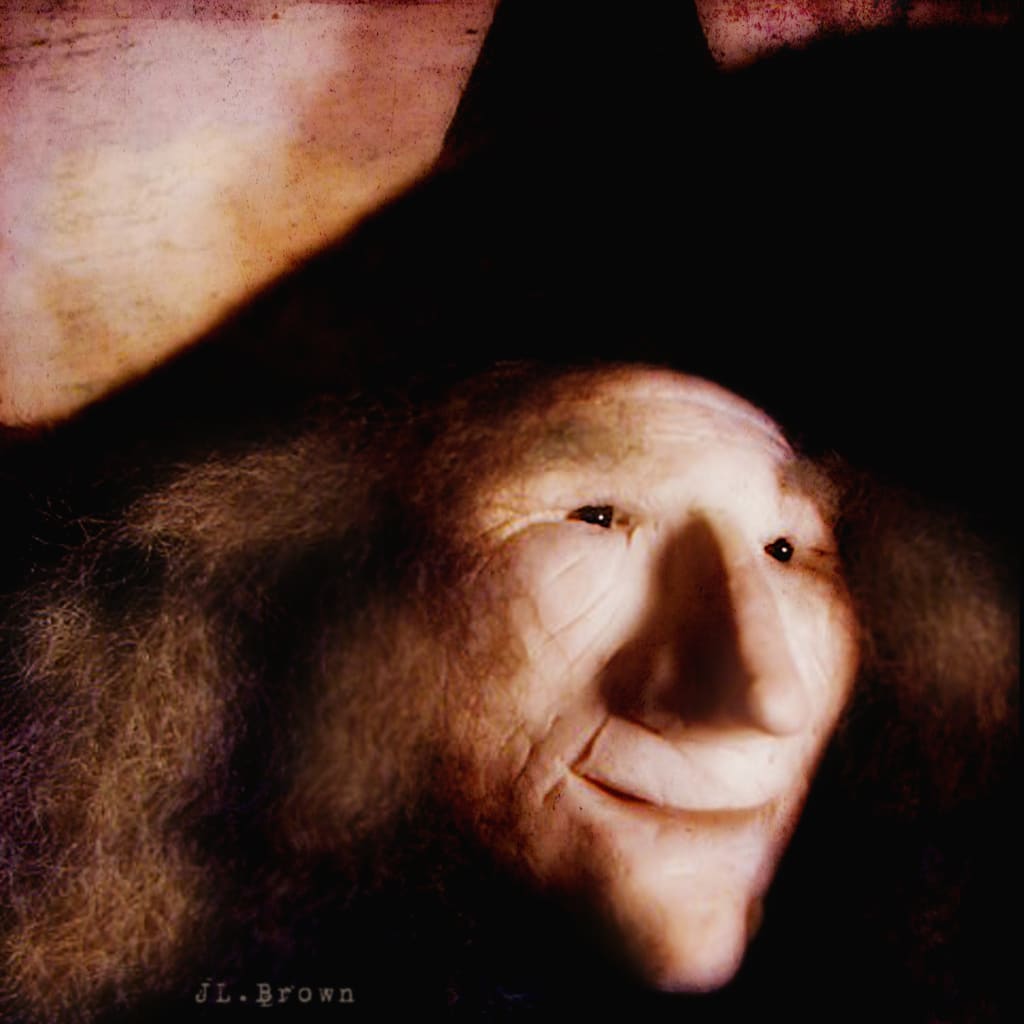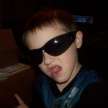The Old Hag
Exploring the Terrifying Phenomenon of Sleep Paralysis

How many deaths occur in beds each year? We talk a lot about individuals dying gently in their sleep, but how can we be certain that those last few seconds were peaceful at all unless we are with them?
Please take a time to visualize this scene.
You're by yourself, lost, and racing through a field. Just now, there were other people with you. Who was it? You know there were others, even though you can't recall. Still, you're on your own right now. No, hold on. In the distance, there is someone. As you sprint toward the person at the far end of the field, you pick up more speed. It looks like a man, but he isn't responding to your yells. Is his back to you? His face is hidden by darkness. As you come closer, he remains unresponsive. That's when the feeling that something isn't quite right hits. Not at all a man, this one. This is not like the others.
Slowly approaching, you see why you were unable to identify a face. There's merely a shadow there, not a human creature.
You glance at your alarm clock as you get out of bed. You realize that it's not quite time to get up—it's 3:30 a.m. Fortunately, the dream has upset you, so it takes a time to realize that something is wrong. Even though you're back in the real world, something seems strange. You experience that sickening feeling in the pit of your stomach. You become aware that you are immobile at this point. Panic strikes without warning. You're immobile. Your thoughts start to swirl. What's taking place?
You can only move your eyes. That's when it becomes visible to you. Is that the shadow from your dream lurking on the edges of your vision? The shadow advances a step and your eyes lock on. No, the shadow isn't here. You're able to distinguish features. It's abbreviated. It appears somewhat human. Emerging from the shadows, the figure takes a position at the foot of your bed. Though the darkness of your room prevents you from seeing all the details, you can see her well enough now. The woman is older, with a hunched over and skewed back. She is grinning as she looks at you. But not a pleasant smile, not one that fills you with love. This smile sends a shiver down your spine. This smile makes you want to scream, but you can't.
She gets on your bed carefully. Even when you are exerting all of your efforts to move, nothing will happen. Her gaze never leaves yours as she starts to crawl up your body. She eventually reaches your chest and settles down such that her legs are straddled over you. She presses down, and the weight feels heavy, heavier than a woman of her stature should feel. She is now clearly visible to you. Though she appears to be a woman, there's something wrong with her appearance, as if she's imitating the real thing with a tiny mistake that makes it stand out from the original.
At that moment, her smile persisting, she puts her hands around your neck. She begins to strangle you at that point. Hopefully, you'll discover that you have movement. Life seems to be returning to your body, even if it's just your fingertips or your foot. Should this be the case, you would be left shaken but alive as the woman gradually disappears before your very eyes. The old hag and you have just met.
The recurring parallels reported by those who suffer from sleep paralysis are what captivates me about both the old hag and sleep paralysis in general. I would thus appreciate it if you could share your experience in the comments if you have ever had sleep paralysis or woken up to find something in your room that you shouldn't have.
The word "nightmare" is derived from the Old English word "mare," which was often used to refer to a monster that would haunt helpless people with terrible dreams. The mare, according to Scandinavian tradition, was a damned woman who would come into your bedroom, perch on your chest, and transport you to a horrible, nightmare-like world.
As I mentioned earlier, the old hag's consistency is amazing. You have access to global cultural imagery. Everywhere we look, from Nigeria to Canada, Latvia to Pakistan, Cambodia to Brazil, we hear tales of nighttime visits by demons who paralyze their victims and frequently even jump on top of them, making breathing difficult.
The names given to these animals appear to change depending on the location. They may be the night hag, jinn, witches, or even Satan himself in certain situations. Still, the descriptions of an elderly woman with a persistent smile appear.
Scientifically speaking, these unexplained occurrences are explained by sleep paralysis. Our body is essentially paralyzed during REM sleep so that we are safe while our dreams come true, but occasionally we wake up from this state and find ourselves caught in a type of limbo between sleep and wakefulness. For several seconds, the paralysis persists. Your body and mind feel disoriented, afraid of being immobile, and presume it's in danger right away. It's frequently claimed that this, along with the abrupt awakening from the dream state, causes hallucinations. Many people claim that it begins as tingling in the body or a feeling of static electricity in the atmosphere .The feeling of an unknown enemy in your room quickly follows. Some can only feel the sensation of a presence, but others see full-blown visualizations of something there.
Our perception of reality is distorted as a result of our mind's ability to seamlessly transition between various states of awareness. It's amazing how much our minds can change what we perceive to be the real world.
It's an intriguing notion that when we're paralyzed and vulnerable, we imagine a terrifying scenario. It reminds me a lot of UFO reports. As social fears and culture shift, so too should the look of these nightly guests. The old hag made many appearances during the Salem witch trials; these were frequently interpreted as attempts by the witches to frighten the populace. In a society where people are afraid of witches, it makes perfect sense if these were hallucinations. It would seem logical that a sleep paralysis hallucination would take the form of an elderly crone-like figure emerging out of your dreams.
However, why is the old hag still so common?
There are other apparitions associated with sleep paralysis than the elderly hag. Tales of shadow people and goblin-like beings. Reports of sleep paralysis and meetings with fairies from centuries ago are strikingly similar to the numerous accounts of alien abductions. Even older stories about the succubus and incubus could serve as illustrations of this phenomenon. However, the elderly woman appears to be the most frequent. Throughout hundreds, if not thousands of years, people have repeatedly reported seeing her.
Some have proposed that these additional beings, sometimes called sleep paralysis demons, are merely different forms of the old hag. Perhaps this smiling old lady who's creeping into your chamber isn't really it at all.
The hag's reported ability to walk is, in my opinion, one of its most terrifying features. It's common to describe the hag as moving slowly. When you awaken in the middle of the night, you find her standing in your dimly lit doorway, grinning broadly. It is aware of your immobility. It is aware that you are powerless to defend yourself. It moves slowly and deliberately as a result. It doesn't try to hide or sneak on you. It approaches your bed at its own leisure, moving slowly as if it were relishing the terror it instills. As if the terror is necessary. Perhaps there's no need for the hag to hurt us physically. Perhaps there's something else she wants to extract from its victims.
Canada's Newfoundland has seen so many instances of the old hag that the phrase "hag ridden" is frequently used there. It is estimated that around one in four persons have experienced this phenomenon globally due to its high frequency. That percentage soars to an astounding sixty percent in Newfoundland, according to the statistics.
Most cases of sleep paralysis are associated with hallucinations or visions. However, it seems that only a very tiny portion of people worldwide consistently experience sleep paralysis. That being said, you belong to an extremely unfortunate minority if you frequently find yourself visited by the old hag.
They could be the most often reported paranormal encounters in history, if you believe that they are paranormal occurrences. Millions of people have reported seeing these beings, but the majority have dismissed their experiences as mental tricks. It's an intriguing theory that people who have been subjected to abuse or trauma throughout their early years may be more prone to sleep paralysis.
It's commonly believed that dreams help our brains process memories, enabling us to move them from short-term to long-term memory and help us deal with emotional issues that arise. Is sleep paralysis just that process seeping into a different level of consciousness? Perhaps it's just our brains processing our fears and traumas from the past in a way that we don't fully understand.
It was thought that you could hag someone and then unleash the hag on those who had wronged you in certain societies, such as the one in Newfoundland. The hag would often assume the form of the person who had called them in these situations.
As I mentioned at the beginning of this episode, a lot of people are claimed to have died peacefully as they slept, but perhaps that isn't always the case. The most terrifying case I can think of is the one that served as the basis for Wes Craven's "A Nightmare on Elm Street." Craven read in the LA Times about a young Cambodian refugee who was afraid to go to sleep because he thought someone would assault him in his bed.
This child's dread would not be unusual, given that he had survived a horrifying genocide. But what came next was very scary. At last, the toddler drifted off to sleep. His parents, who were clearly relieved, hoped that their nights of insomnia would soon come to an end. That is, until the middle of the night, when they heard the screaming. It was too late when the parents hurried to their child's bed. He had passed away. It remained unknown what caused the death. The fact that he wasn't alone makes this much more alarming. Around that time, a number of Southeast Asian refugees mysteriously died as they slept, leading to the diagnosis of Sudden Unexplained Nocturnal Death Syndrome (SUNDS).
It has never been explained why these instances seemed to target a particular ethnic group moving to America. There are many who argue that a strong believe in demons, along with trauma and living abroad, combined to produce a lethal concoction of circumstances that the mind might exploit, twisting people's anxieties as they slept until their hearts could no longer bear it.
I can't decide which concept scares us more—that a ghostly presence is haunting our rooms at night or that our brains are capable of terrifying us to the point of quick death. It is scary to think of the organ we most identify with as ourselves turning against itself.
In the 1800s, people in Germany were known to recite a prayer before sleep to ward off the demons that the night could invite in:
Here I am laying down to sleep.
No nightmare shall plague me until they have swung through all the waters
That flow upon the earth and counted all the stars
That appear in the firmament.
Thus help me God.
Father, Son, and Holy Ghost.
If you aren't so inquisitive enough to invite the night hag to come visit you, then perhaps it is worth trying out for tonight.
I'm grateful that you came down this dark rabbit hole with me. I hope you have a restful night and wonderful dreams.
About the Creator
Richard Weber
So many strange things pop into my head. This is where I share a lot of this information. Call it a curse or a blessing. I call it an escape from reality. Come and take a peek into my brain.
Enjoyed the story? Support the Creator.
Subscribe for free to receive all their stories in your feed. You could also pledge your support or give them a one-off tip, letting them know you appreciate their work.






Comments
There are no comments for this story
Be the first to respond and start the conversation.